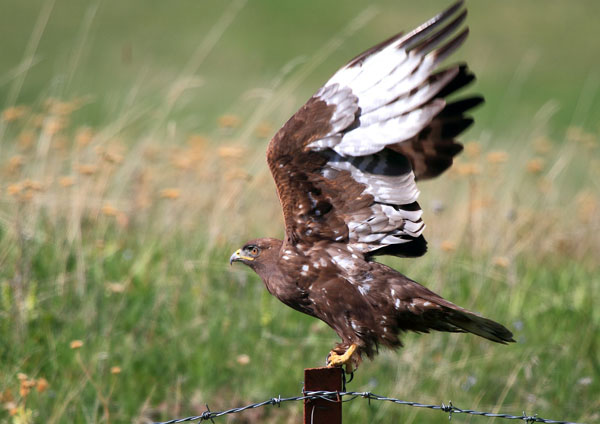Buteo buteo
IUCN
LCBasic Information
Scientific classification
- name:Buteo buteo
- Scientific Name:Buteo buteo buteo,Buteo japonicus
- Outline:Raptor
- Family:Accipitriformes Accipitridae Buteo
Vital signs
- length:50-59cm
- Weight:515-810g
- lifetime:30year
Feature
It is mainly active during the day, has an alert character, sharp vision and is good at flying.
Distribution and Habitat
The natural distribution covers the entire European continent and northwest Asia, northern Scandinavia and northern Russia. It is also a resident species in the Caucasus, northern Turkey and Iran. In Central Europe, they are the most common birds of prey. During the breeding period, they mainly live in mountain forests and forest edges. In Changbai Mountain in northeast China, they are distributed from the broad-leaved forest at the foot of the mountain at an altitude of 400 meters to the mixed forest and coniferous forest at an altitude of 2,000 meters. Sometimes they even appear above the tundra belt on the top of the mountain above 2,000 meters. In autumn and winter, they appear more in low mountains and hills and plains at the foot of the mountain. They often hunt in open rural areas and may appear in areas without trees in winter. They especially like to eat voles, but they also eat a variety of insects, including Orthoptera such as crickets, small beetles, bees, butterflies, mant
Appearance
The Eurasian buzzard has a wide range of body color variations, with three types of color: light, brown, and dark. The hermaphrodite is monotypic, with five wing fingers. It has a short, thick head and a rounded body. The shape and form of this species are very similar to those of the common buzzard, but the wings are usually longer and more pointed, the outer edge of the secondary flight feathers has a larger black area, and the color of the chest is more uniform. The body color varies greatly, with the upper body mainly dark brown, the lower body mainly dark brown or light brown, with dark brown horizontal stripes or vertical stripes, the tail is light gray-brown, with multiple dark horizontal stripes, but lacks the yellow-brown tone compared to the common buzzard, and the separation between the light and dark bands on the abdomen is more obvious, close to the great buzzard.
Details
The Eurasian buzzard is a bird of the family Accipitridae and the genus Buteo. It is a medium-sized bird of prey with a body length of 50-59 cm. The body color varies greatly, with the upper body mainly dark brown, the lower body mainly dark brown or light brown, with dark brown horizontal stripes or vertical stripes, and the tail light gray-brown with multiple dark horizontal stripes. When flying, the wings are wide, with obvious white spots at the base of the primary flight feathers, white under the wings, only the wing tips, wing corners and outer edges of the flight feathers are black (light type) or all black-brown (dark type), and the tail is fan-shaped.
The Eurasian buzzard is partly migratory and partly resident. The populations that breed in Greater and Lesser Khingan Mountains and the areas to the north of China are summer migrants, some are summer migrants and some are resident in Changbai Mountain area of Jilin Province, and some are winter migrants and some are migratory in Liaoning, Hebei and the areas to the south. The spring migration time is March-April, and the autumn is October-November.

Mostly active alone, sometimes 2-4 are seen hovering in the sky. Active mainly during the day, alert and sharp-eyed. Good at flying, most of the day is spent hovering and gliding in the air, with broad wings spread out to the left and right, and slightly raised upwards to form a shallow 'V' shape, and the short and round tail spread out in a 'fan' shape, with an extremely graceful posture.
Feeds on forest rodents, and has a large appetite. Six rodents were found in the stomach of one rodent. In addition to rodents, they also eat frogs, lizards, snakes, hares, small birds, large insects and other animal foods, and sometimes go to villages to prey on chickens and other poultry. The main way of hunting is to hover in the air, observe and search with sharp eyes, and once they find prey on the ground, they suddenly swoop down quickly and catch it with their claws. In addition, they also perch on high places such as branches or telephone poles to wait for prey, and only pounce when the prey appears in front of them.








